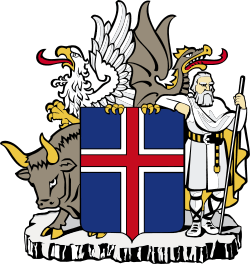Jól (Iceland)
Jól (Icelandic pronunciation: [ˈjoːul̥]) is the term used for the Christmas holiday season in Iceland and the Faroe Islands and was originally a pagan religious festval.
Whereas the start of jól proper is announced by the chiming of church bells throughout the country in the afternoon of December 24, it is more accurate to describe the season six week event, consisting of seven key phases and dates: Aðventa (advent, the four Sundays preceding jól), aðfangadagskvöld (Yule eve), jóladagur (Yule day), annar í jólum (boxing day), gamlársdagur (old years day), nýársdagur (New Year's Day) and þrettándinn (the thirteenth, and final day of the season).
The main event in Iceland, is Christmas Eve ('aðfangadagskvöld'), when the main Yule meal is served and gifts are exchanged.
Jólasveinar
13 days before December 24 the Yule lads (jólasveinar in Icelandic) start arriving into the towns to give children that have behaved well small gifts in a shoe that has been placed by the window.
Food
On Yule Eve, traditional dishes are served, based on regional differences in cuisine and accessibility. The most popular dishes are smoked lamb and pork, ptarmigan and turkey.
Þrettándinn
On January 6 Icelanders celebrate þrettándinn (the thirteenth of jól), go into the corner of their houses and shout out this folklore poem to drive out evil spirits and invite good spirits and elves.
- Komi þeir sem koma vilja (those come who want)
- Fari þeir sem fara vilja (those go who want)
- Mér og mínum að meinalausu (neither hurting myself nor my family)
Communal bonfires are held where fireworks are light, elves arrive and dance with the people.
See also
- Iceland at Christmas worldwide
- Yule
- Jul (Denmark)
- Jul (Norway)
- Jul (Sweden)
References
| |||||||||||||||||||||||||||||||||||||||||||||||

